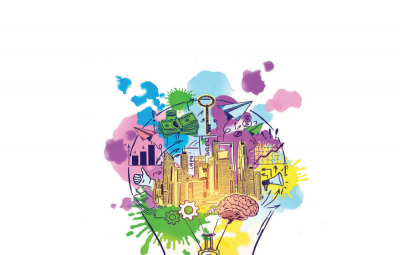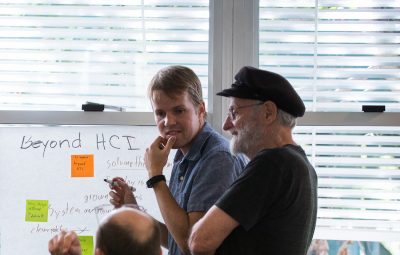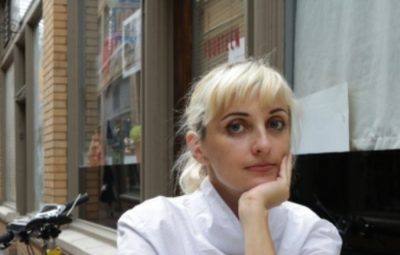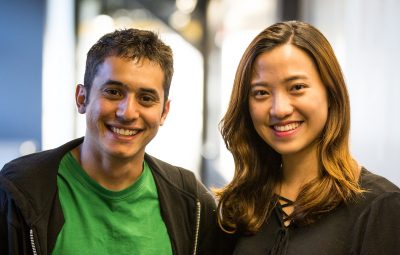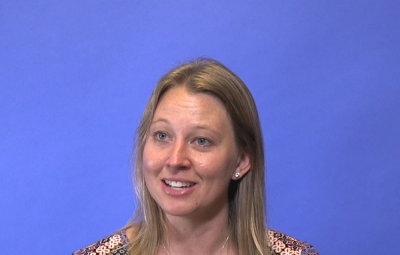Graduate student Janet Johnson is currently working towards her doctorate degree in Computer Science, while also conducting HCI research in the UCSD Design Lab, primarily focusing on XR (extended reality).
While originally from India, Johnson often moved, which led her to create her own definition of “home.” “It’s confusing,” she starts. “I grew up in a lot of places, I grew up in India, but also did my high school in Dubai, my brother lives in Wisconsin, and I’ve been visiting since I was a kid. My family has always moved, I lived in three or four countries, so home is complicated. The idea of home itself was different for me, it was just ‘home is where the people are’…I don’t associate the feeling of home with a specific geographical location.”
In addition, Johnson attributes moving to giving her the necessary tools to be adaptable. “I’ve had exposure to really different types of people from different cultures, and so it definitely shaped how I thought…it changed my idea of what someone from someplace should be like or act, and so it’s a lot more fluid. [I] am jealous of people who grew up in one location and have this really deep connection with the place, but at the same time, I feel like it’s easier for me to connect with people anywhere and really adapt to more settings easily…it’s easy for me to get comfortable really quick.”
After completing her time in high school in Dubai, Johnson returned to India to study at Manipal University. There, she earned her undergraduate degree in computer science. Both her father and brother worked in STEM fields, spurring her lasting interest in computer science. “The way [school] works in India is once you’re done with 10th grade, you pick something to specialize in, and I picked computer science. I tried economics first and it was interesting, but I just felt like something was missing. I think computer science [has] the problem-solving aspect, which is pretty close to essentially what I do now. I [also] had a brilliant teacher who taught her computer science [class] outdoors with the lines and skits, like she taught data structures using theater. It was also theoretical, but it blew my mind, [and] it also a really cool way to take something I didn’t fully understand or know how to deal with and break it down into enough steps where now you have this sequence that solves a problem.”
While Johnson earned her undergraduate degree in computer science, she expresses a great interest in psychology as well. “I’ve always been fascinated with the whole side of psychology, and how people work or even just why people do what they do,” she said. “It’s interesting to me to try and understand why people do what they do.” Johnson would receive the opportunity to combine her two interests of computer science and psychology after her undergraduate when she began working as a UX (User Experience) researcher for Microsoft India.
“I didn’t really know that I could combine [computer science and psychology],” she notes. “So when I joined Microsoft, I started out on a networking team, and slowly moved teams until I got to UX. But I think there was always this feeling that there’s something more out there. Microsoft exposed me to working in HCI.”
Eventually, going back to school seemed like the best next step. Johnson placed the Design Lab as one of the primary reasons for why she chose to attend UCSD. “[The Design Lab] seemed varied in the sense of an umbrella organization,” she describes. “Multiple people from different backgrounds, it seemed like a good way to do [the research] I wanted to come to grad school for.” Thus, Johnson made the transition from industry back to academia in order to complete her master’s degree.
In the shift back to academia, she noticed the challenge it presented to her. “[Making that change] was hard because the pace is different, how people work is different, and I don’t think there’s a good or bad [about it]. There are some adjustments like taking classes again and having homework again and there were times I thought ‘Am I sure I want to do this?,’ but it was fine, it was exciting.”
Towards the end of her journey for her master’s, Johnson started doing research for mixed reality, and she eventually met with her advisor where she made the decision to continue onto the PhD program. She recalls that her initial experience of the PhD program focused on her conquering the intimidation of research. “It was intimidating meeting all these people who are obviously brilliant, and it was surreal to be in the same room with that many smart people. I was also learning how to think about problems in a slightly different way.”

So, what is Johnson’s research? Johnson conducts HCI research, primarily focusing on XR. As Johnson describes it, “XR is an umbrella term for augmented reality, augmented virtuality, mixed reality, and virtual reality.” She says to think of it as a spectrum where one end is the real world alone, the other is complete virtual reality, and everything in between is varying mixes of the two. Johnson’s research primarily focuses on this mixed middle ground. “The majority of my research focuses on how we can use mixed reality or extended reality to help a novice…get help from an expert.” She then poses the example of both surgery and CPR. Johnson’s research explores ways for an expert to provide instructions to the novice as if though they were in the same room. Her goal is to help bridge the distance between novices and experts, both physically and skill wise, while also decreasing the amount of time a person receives aid. “By the time a medical personnel arrives at the scene, it’s already been 7 to 10 minutes, so each minute counts for the person’s life,” she explains. “You don’t have time in that 10 minutes to train the people around to be able to do CPR or any other sort of resuscitation, same with surgery.”
As Johnson continues to conduct her research in this field, she’s excited for what the future holds for this technology and the ways she can contribute to it.


